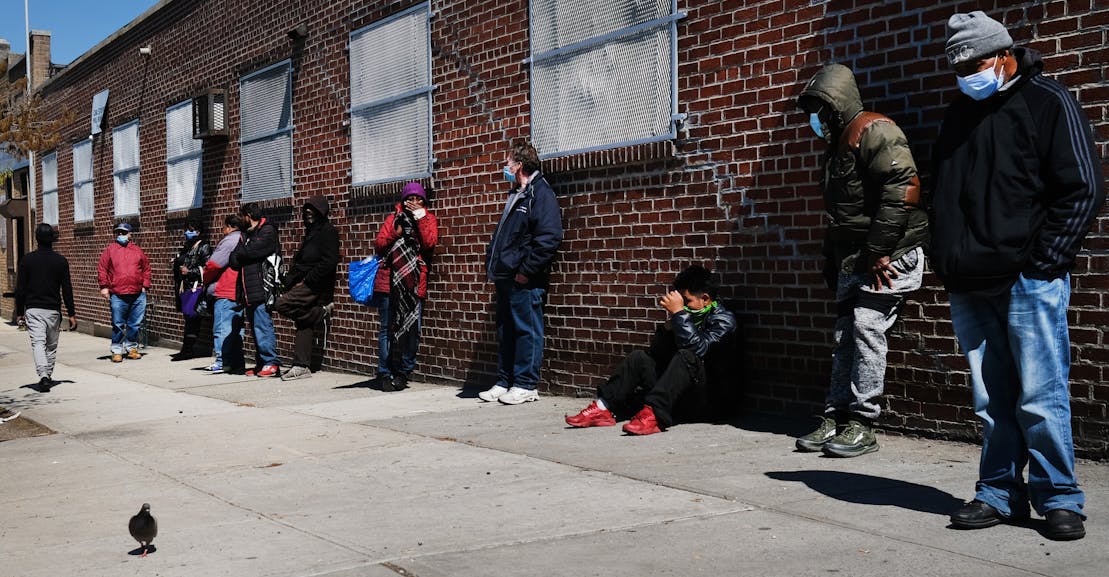The single most important thing to understand about the coronavirus pandemic so far is that it has not affected everyone the same. (Though if you are the president, you could start with acknowledging that it affects more people than “virtually nobody.”) We are not “all in this together.” In fact, for a lot of pretty well-off people, things are mostly fine. In keeping with how we do everything else, America is botching this aspect of responding to the pandemic. We are failing the poor, most notably those who are struggling with the economic fallout, but also those who have been exposed to the virus—and we may never know exactly badly we let them down.
According to research compiled on Covid-19 cases during the first few months of the pandemic, the poorest among us have consistently been hit harder by the virus. In May, the New York City Department of Health reported that people in less affluent zip codes were dying at far greater rates. A recent study published in the Journal of General Internal Medicine, based on data from April and May, reported that those who call out sick from work with coronavirus were more likely to be low income and have less education; 29 percent of those calling out sick were uninsured, roughly three times the percentage of uninsured in the general population. As of mid-May, according to a federal analysis, older Americans who were also poor enough to qualify for Medicaid were four times more likely to get the disease than those who just had Medicare, which covers everyone regardless of income.
These dynamics may have changed throughout the pandemic, as cases spread outside of clusters in places like New York and we started to see more scolding stories about naughty millennials spreading the virus at bars (as opposed to their naughty governments reopening bars before it was safe). After all, it makes sense that as lockdown measures eased, more people who had previously been financially stable enough to avoid leaving home for work would get sick. In the height of the strictest lockdown measures in the spring, in the hardest-hit states, those with no financial choice but to work were far more likely to be continuing their previous daily routines.
We will never know the name of every person who died from coronavirus, nor every fact and facet of how this disease spread, who was most affected, who was most let down. But we are nevertheless missing key data on how this virus has affected different income groups. The CDC keeps data on cases and deaths by race/ethnicity, age group, and gender. It has data for outbreaks in prisons and cases among health care personnel. The Centers for Medicare and Medicaid Services has data on nursing home deaths, though they report fewer deaths (54,437) than the Kaiser Family Foundation’s tracker (80,006).
Yet it is still hard to find a good, definitive answer for just how much worse the virus has been for low-income Americans. We know it is worse, and we know it is worse for people of color, who also tend to be lower income (though the virus has been worse for people of color across the income spectrum). The answers we do have tend to come from pieces of academic research, like those mentioned above, not our government. But we will never know exactly how far this has been a disease of poverty, and every day that we continue without this data, the harder it will be to ever get a clear picture about how this disease has impacted the United States.
